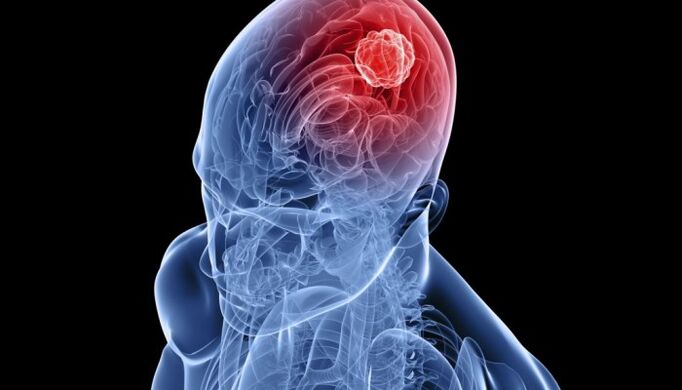If discomfort occurs in a certain area, it is certainly a source of problems for the patient, but pain that affects the whole body causes much more suffering. In this case, even everyday activities are pushed into the background, as they are difficult to carry out.
Many are familiar with the feelings of weakness, fatigue, and pain that disrupt an active life. Similarly, muscle, bone, or joint pain cannot be ignored. It should force the patient to make quick decisions to find out the cause and essence of further action. But you need to see a doctor first.
Cause
If the muscles and joints of the whole body are in pain, you must first find out what it is related to.
An extensive zone of such feelings is required to encourage the patient and physician to the idea of a systemic lesion. The cause is not to be found in the individual tissues of the musculoskeletal system, but in the functioning of the entire body and its systems. However, it is quite difficult to understand what is really hurting: the muscles, the bones or the joints. Such feelings spread throughout the body and have no exact localization. But nonetheless, there are states that are very similar. These are the following:
- Physical stress.
- Infectious diseases.
- Pathology of connective tissue.
- Diseases of the blood.
- Tumor processes.
- Neurological disorders.
As can be seen, the pathology is quite varied and severe. If you do not take into account the completely physiological causes of muscle weakness and pain, you should be very careful about the likelihood of these diseases. Medical consultation is never unnecessary.
The origin of joint and muscle pain in the whole body can be presumed after a clinical examination by a doctor.
Symptoms

Any pathology has specific characteristics. All manifestations should be considered, even if insignificant. To identify the disease that affects the condition of the muscles and joints, the patient's complaints and objective symptoms should be analyzed.
Since pain is the most common symptom, possible features should be considered:
- Pain, burning, cutting or stabbing.
- It is localized in the area of muscles, bones or joints.
- It feels or is unstable in the same areas of the body.
- Permanent or intermittent.
- Moderate, strong or weak.
It may be accompanied by weakness, tiredness or pain. If the cause of the pain lies in general illnesses in the body, there will certainly be other symptoms that indicate the source of the problem.
Physical stress

First, you need to rule out a situation that almost anyone could face. Excessive physical activity can lead to muscle tension, which affects the sensations in different parts of the body. Pain and weakness are associated with the accumulation of lactic acid in the tissues and micro-damage to the fibers. This causes a sore throat that goes away over time. It should be reminded that only the muscles are involved in the process and there can be no other symptoms.
If physical overload is ruled out, more severe causes of pain should be sought.
Infectious diseases

Bone and muscle pain is known to anyone who has ever had a respiratory infection. Even a banal ARI is accompanied by such symptoms. What about a more serious condition like the flu, meningitis, bleeding fever, leptospirosis, Lyme disease. Flight pains are characteristic of brucellosis and epidemic myalgia. In many cases, such feelings are a consequence of microbial poisoning. Infectious diseases are accompanied by other symptoms:
- Fever.
- Cough, sneezing.
- Rash.
- Nausea, diarrhea.
- Headache.
- General weakness.
Joint pain can even bother patients with liver damage - viral hepatitis. In this case, the severity of the right hypochondria, yellowing of the skin and decreased appetite are characteristic. We must not forget the possibility of parasitic invasions, such as trichinosis, in which muscle pain is of great diagnostic value.
The spectrum of infectious pathology is very wide, so the cause of pain in the body must be determined in time.
Pathology of connective tissue

If the muscles and joints are painful, the patient should be examined for systemic diseases: lupus erythematosus, polymyositis, scleroderma, rheumatoid arthritis. They have an autoimmune nature and are associated with connective tissue damage found in all body systems. In this case, you need to pay attention to the following characteristics:
- Symmetrical damage to the joints of the hand with characteristic deformities - in rheumatoid arthritis.
- Reddening of the skin in the form of a butterfly - with lupus erythematosus.
- Weakness of the muscles of the limbs and neck - with polymyositis.
- Thickening of the skin of the fingers with a mask - like facial scleroderma.
Another disease with systemic manifestations - rheumatism - should be mentioned. Although a microbial agent (streptococcus) will become a trigger, autoimmune processes will develop in the future. This disease is characterized by flight pains in the joints.
Connective tissue diseases involve damage to the internal organs: heart, lungs, kidneys, and blood vessels and the nervous system.
Diseases of the blood

Diseases of the hematopoietic system are common causes of bone pain. Unfortunately, most of them are malignant, so it is helpful for everyone to know the signs of such a pathology. In addition to body aches, leukemia has the following symptoms:
- Temperature rise.
- Swollen lymph nodes.
- Bleeding of different localizations.
- Pale skin.
- Enlargement of the spleen and liver.
- Susceptibility to infection.
In addition, shortness of breath, general weakness, loss of appetite, lumps on the skin may interfere. The acute form of leukemia manifests itself with pronounced manifestations and is a serious risk to life if not treated properly.
Tumor processes

Pain in the structure of the paraneoplastic syndrome, which is characteristic of various malignancies, can cause pain in the bones, joints, or muscles throughout the body. It is caused by metabolic, immune and other disorders associated with the primary process. Arthro- or osteopathy is common, as are various rheumatological diseases. Similar signs appear long before the tumor process is detected.
In addition, bone pain can be caused by the "cancer poisoning" seen in patients with advanced tumors and metastases. In addition to the indicated symptom, there are general disorders in the clinical picture of the disease:
- Great weakness.
- Emaciation to exhaustion (cachexia).
- Anorexia, nausea.
- Pale skin with a grayish, icteric or bluish tinge.
- Fever.
- Depression, irritability.
Such signs significantly aggravate the patient's condition and adversely affect the prognosis of the disease.
Increased attention should be paid to the early detection of tumors, which is only possible with regular preventive examinations.
Neurological disorders

If the patient feels pain in his muscles, joints, or bones, the problem may even be in the nervous system. Very often, similar symptoms are observed in polyneuropathy. The disease may have different localizations, but the lower extremities are most susceptible to it. In such cases, the following symptoms may occur:
- Numbness, tingling, burning, crawling "goosebumps".
- Decreased sensitivity.
- Changes in the severity of reflexes.
- Muscle weakness, hypotrophy.
- Thinning of the skin, hair loss, dryness.
Polyneuropathy can cause severe pain that has a significant impact on patients ’quality of life.
Diagnostics

Additional methods should be used after the clinical examination to assist in making a correct diagnosis. Given the wide range of possible pathologies, the physician will need a variety of laboratory and instrumental tools. These are the following:
- General analysis of blood and urine.
- Biochemical blood test (infectious antigens, rheumatism tests, tumor markers, acute phase indicators, liver function tests, etc. ).
- Bacteriological analysis of blood and body secretions.
- Bone marrow puncture.
- Computer and magnetic resonance imaging.
- Neuromyography.
It is necessary to consult a rheumatologist, infectious disease specialist, oncologist, hematologist and neuropathologist.
A definitive conclusion on the origin of bone or muscle pain can be drawn from a comprehensive study.
Treatment
After the diagnosis is made, the doctor will prescribe additional measures. Therapeutic tactics depend on the type and frequency of the disease and the condition of the patient's body. It is difficult to formulate a general therapeutic program for any disease that may be accompanied by joint, muscle, and bone pain. It all depends on the situation that determines the use of conservative or operational techniques.
Drug therapy

The treatment of most diseases is based on the use of drugs. Without them, it is difficult to imagine modern medicine. The wide range of drugs allows it to influence the mechanism and cause of almost all pathologies. With the advent of certain drugs, it has become much easier to treat serious illnesses.
Depending on the diagnosis and clinical situation, the following medications may be used for pain throughout the body:
- Antibiotics and antiparasitic agents.
- Non-steroidal anti-inflammatory drug.
- Hormones (glucocorticoids).
- Cytostatics and immunosuppressants.
- Detoxification.
Many drugs have serious contraindications to cancer. This applies to vitamins and metabolites. Their application can help the progression of the pathological process. Of course, the treatment complex may also contain other drugs that affect the individual symptoms of the disease.
Medications must meet generally accepted therapeutic standards and should only be prescribed by a doctor.
Operational treatment

Surgery may be indicated for tumors or blood disorders. In the first case, the abnormal focus is removed along with the regional lymph nodes. Due to the nature of the disease, later appointment of radiotherapy is possible. In progressive leukemia, bone marrow transplantation is recommended for conservative treatment.
Pain in the musculoskeletal system, which covers almost the entire body, can be a cause for serious concern. Early diagnosis and proactive treatment will help prevent complications and improve the prognosis of any disease.



































